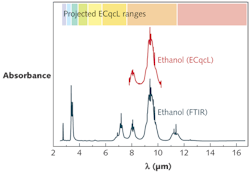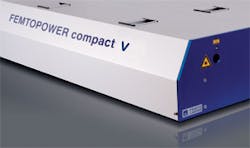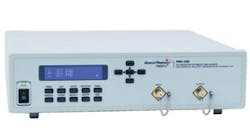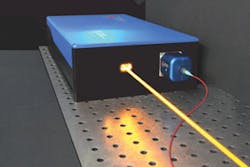INNOVATION AWARDS: CLEO/LASER FOCUS WORLD INNOVATION AWARDS: NTT's KTN-crystal-based laser scanner wins 2010 award
The 2010 CLEO/Laser Focus World Innovation Awards program is designed to honor the most timely, groundbreaking products in the field of photonics and laser science. The awards are sponsored by Laser Focus World magazine and the Optical Society's (OSA; Washington, DC) Conference on Lasers and Electro Optics (CLEO) Applications program. Each year, Innovation Award entrants are challenged to show how their application, service, or product (launched between March 2009 and March 2010) met several key criteria, including significant impact to the photonics industry, overall excellent functionality and long life expectancy, secure patent position, and above all, an exceptional level of innovation.
This year, one winner and three honorable mentions were chosen out of 24 entrants. The awards were presented at the 2010 CLEO/QELS Plenary Session on Monday, May 17 in San Jose, CA.
Innovation Award Winner
NTT Advanced Technology Corp. (Tokyo, Japan)
The 2010 CLEO/LFW Innovation Award winner was NTT Advanced Technology Corp. for the "KTN Voltage-Controlled Laser Beam Scanner using KTN Crystals"—a very broad wavelength-range (532–4000 nm), voltage-controlled laser beam scanner that is 100× faster and 100× smaller than conventional scanners. Unlike mirror- or microelectromechanical systems (MEMS)-based scanners, there are no moving parts inside the all-solid-state KTN device. Its operation is based on the "space-charge-controlled electro-optic effect" within a potassium, tantalum, niobium, and oxygen (KTN) crystal, in which an optical beam input to the device can be deflected 10° using both continuous and step-scanning modes, with scanning speeds up to 100 kHz.
The crystal—only a few millimeters in size—is built into a miniature (2 × 3 × 6 cm3) voltage-controlled, turnkey module with integral thermoelectric cooler for applications in general R&D, communications, imaging, sensing, and printing. And because the scanner's damage threshold is higher than 500 MW/cm2 at 1064 nm, it is also suitable for laser machining and materials-processing applications. Visit www.ntt-at.com.
Femtolasers GmbH (Vienna, Austria)
The "CEP-stabilized FEMTOPOWER V for Few-Cycle Pulse Generation" is a carrier-envelope-phase (CEP)-stabilized booster amplifier that generates high-power, few-cycle laser pulses critical to the attosecond science community. The user-friendly system achieves long-term CEP stability over several hours, with a root-mean-squared drift of only 190 mrad over a 7.5 hour period. Its sub-7 fs, 2 mJ output represents the highest CEP-stabilized pulse energy achieved for a commercial system. Go to www.femtolasers.com.
General Photonics Corp. (Chino, CA)
The "PMDPro Polarization Mode Dispersion analyzer for Communications Networks" is a compact, all-digital, inexpensive test instrument that both generates and compensates for the effects of polarization-mode dispersion (PMD) in high-speed, in-service communications networks. It can deterministically generate precise first-order PMD up to 180 ps and second-order PMD up to 8100 ps2 as fast as 1 ms. Its automatic polarization-optimization function simplifies PMD tolerance testing of components and systems. These capabilities are needed to meet the increasing challenge posed by PMD effects as communications systems increase in speed from 10 to 40 and 100 Gbit/s and beyond. Visit www.generalphotonics.com.
Toptica Photonics AG (Munich, Germany)
For more information on the CLEO/LFW Innovation Awards, go to www.cleoconference.org/CLEOApplications/CLEOLFWinnovationawards.aspx and be sure to enter your innovative photonic products for the 2011 competition.
More Laser Focus World Current Issue Articles
More Laser Focus World Archives Issue Articles





